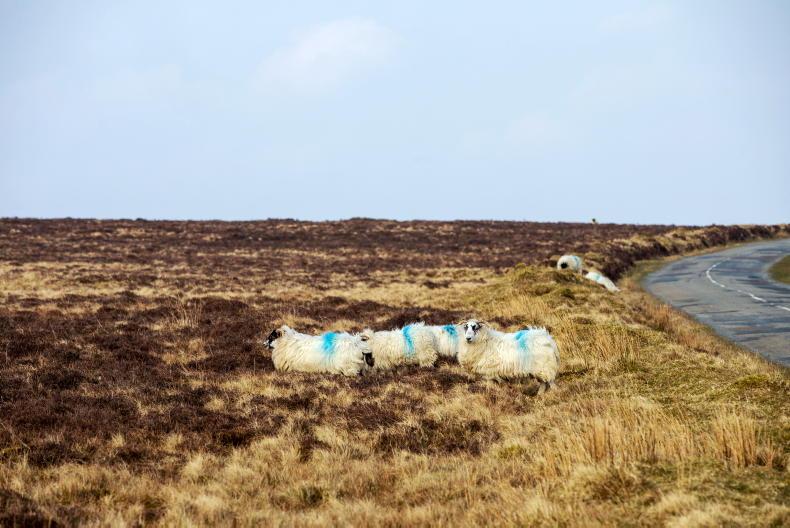Disjointed policy and schemes, economically vulnerable farmers and a sector unrewarded for the ecosystem they provide – the key take home messages discussed at the joint Teagasc and CAFRE Uplands conference on Tuesday.
There were some positives highlighted, but the keynote speakers couldn’t get away from the significant deficiencies and immediate threat to the very existence of hill farmers.
Hill farmers could badly do with some of the political promises starting to flow in advance of the upcoming general election.
There are more hill farmers than organic, forestry or renewable energy farmers put together. Some of them spoke from the floor on Tuesday and repeatedly said the last thing they need is another short-term scheme or restrictive land designation.
They are overwhelmed with red tape for short-term schemes and projects, each more complicated than the other. What they want is a more long-term vision and plan for how they are to manage large areas of land where currently they are getting little or no reward for many of the benefits provided.
Decline
As a sector, hill farmers are and have been in continuous decline. The age profile is getting older. One farmer at the meeting said there will be no stock on the hills shortly.
He called out his own local area in Donegal where hills have been abandoned. CAP support for the suckler cow or ewe means nothing when the stock is gone.
Teagasc’s Emma Dillon displayed the numbers for this cohort of farmers that are in the National Farm Survey. Let’s say 8,000 to 10,000 farmers, the average annual family farm income is in the order of €12,000. On average there is another €22,000 coming into that household as direct payments.
So that means the average 30 hectare farm family is dependent on direct payments to the order of 170%. She said that 40% of these cattle and sheep farms are economically ‘vulnerable’ – as in they are simply not economically viable. There is another 40% dependent on off-farm income to take them out of vulnerability.
The potential upside is that these farmers have what the EU now values very highly, but has paid very little for. High quality water, high nature value land rather than valueable space for nature, and potential for carbon sequestration, none of which have any monetary value in an Irish scenario.
The current monetary system only values a small proportion of the outputs from these farms – the lambs and cattle that are reared and graze the hills.
Environmental schemes have attempted to put more value on non-monetary measures. The ACRES financial dilemma is a bit like the CAP budget – it’s a money problem. There is simply not enough of it and if you spread it thinly, you end up doing very little strategic work.
Take the last five years. We’ve never had more farmers in environmental schemes (ACRES), and we’ve had multiple suckler support schemes. Suckler cow numbers are in significant decline, sheep numbers are following a worryingly similar pattern and there are less and less farmers on the hills.
It’s easy for the politicians to promise to pay more per suckler cow when you know for a fact there are going to be less and less cows.
Mixed messages
James Moran from the Atlantic Technological University summed it up well when he said farmers are getting mixed messages. He highlighted the lack of a framework for action, a roadmap to show farmers that if they do their bit of work on their farm, it all builds into the bigger picture.
Fundamentally he said this is complex, so you need it working across multiple Government departments. In summary he said, at the moment as a country we can’t agree on the targets, not to mind the plan of action to deliver it.
There were some positives highlighted. The problem is quantified. Pilot projects are up and going. Conferences like this crystalise the challenge. In the next two years, 2025 and 2026, the next CAP will be created.
A clear long-term vision and plan for how to reward hill farmers is needed or the decline will inevitably continue.






 This is a subscriber-only article
This is a subscriber-only article










SHARING OPTIONS: